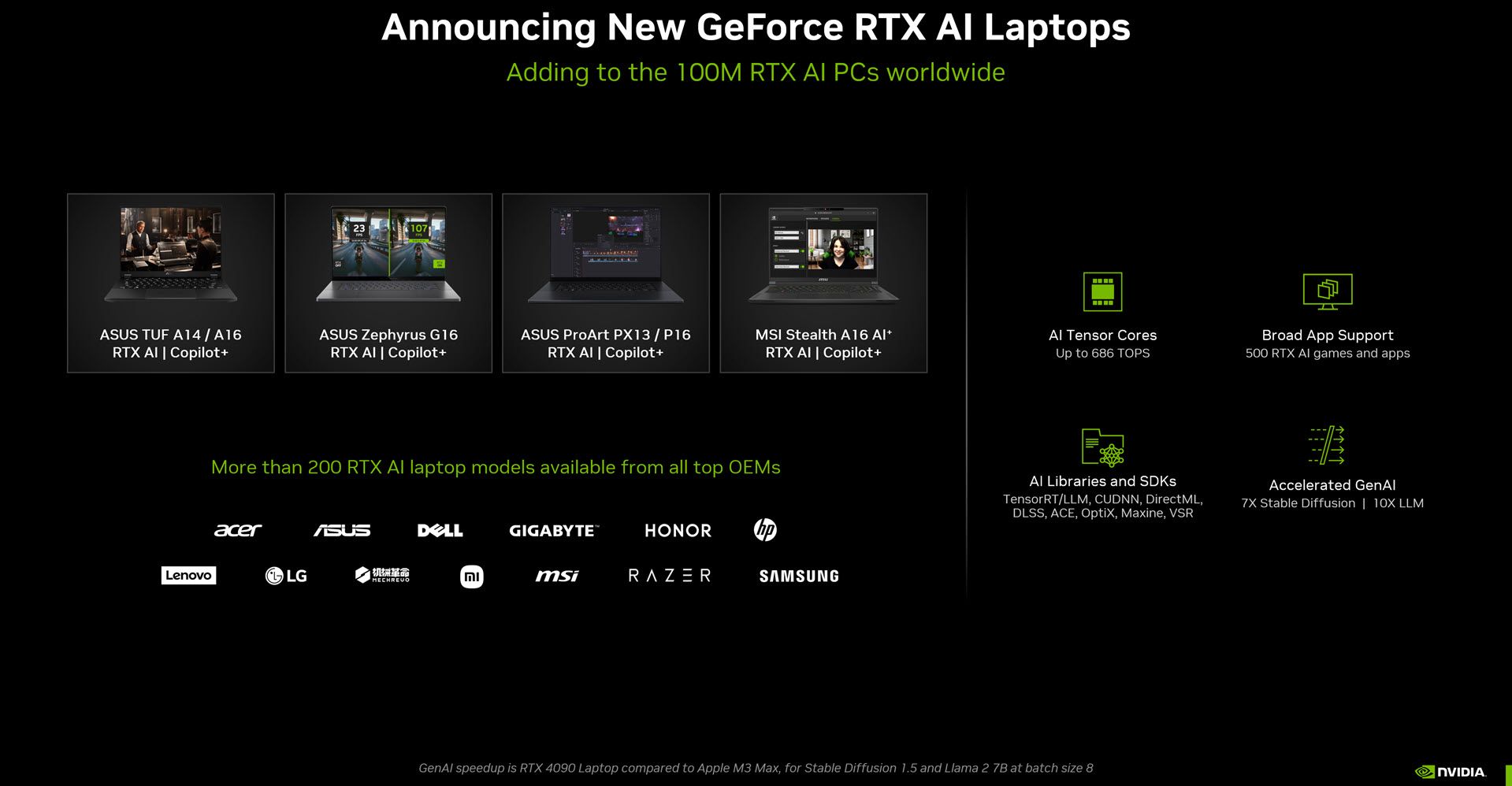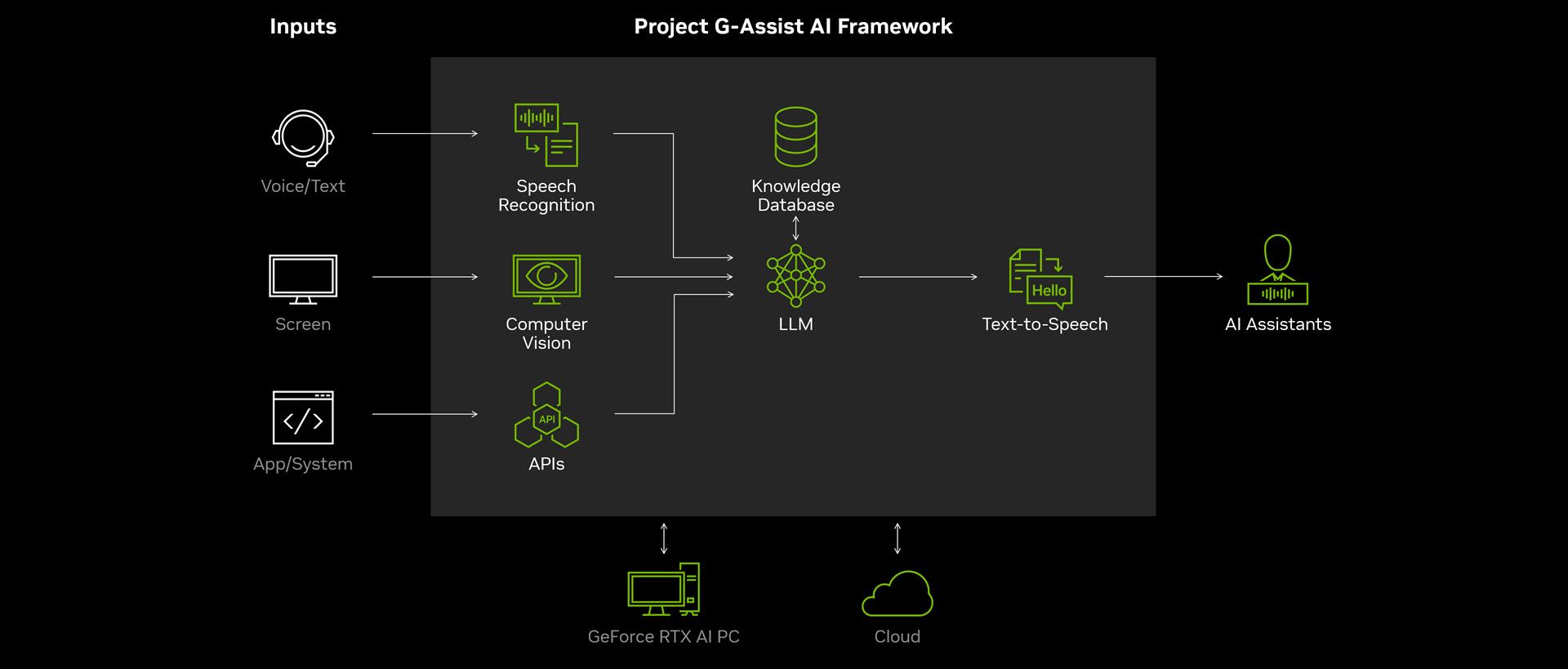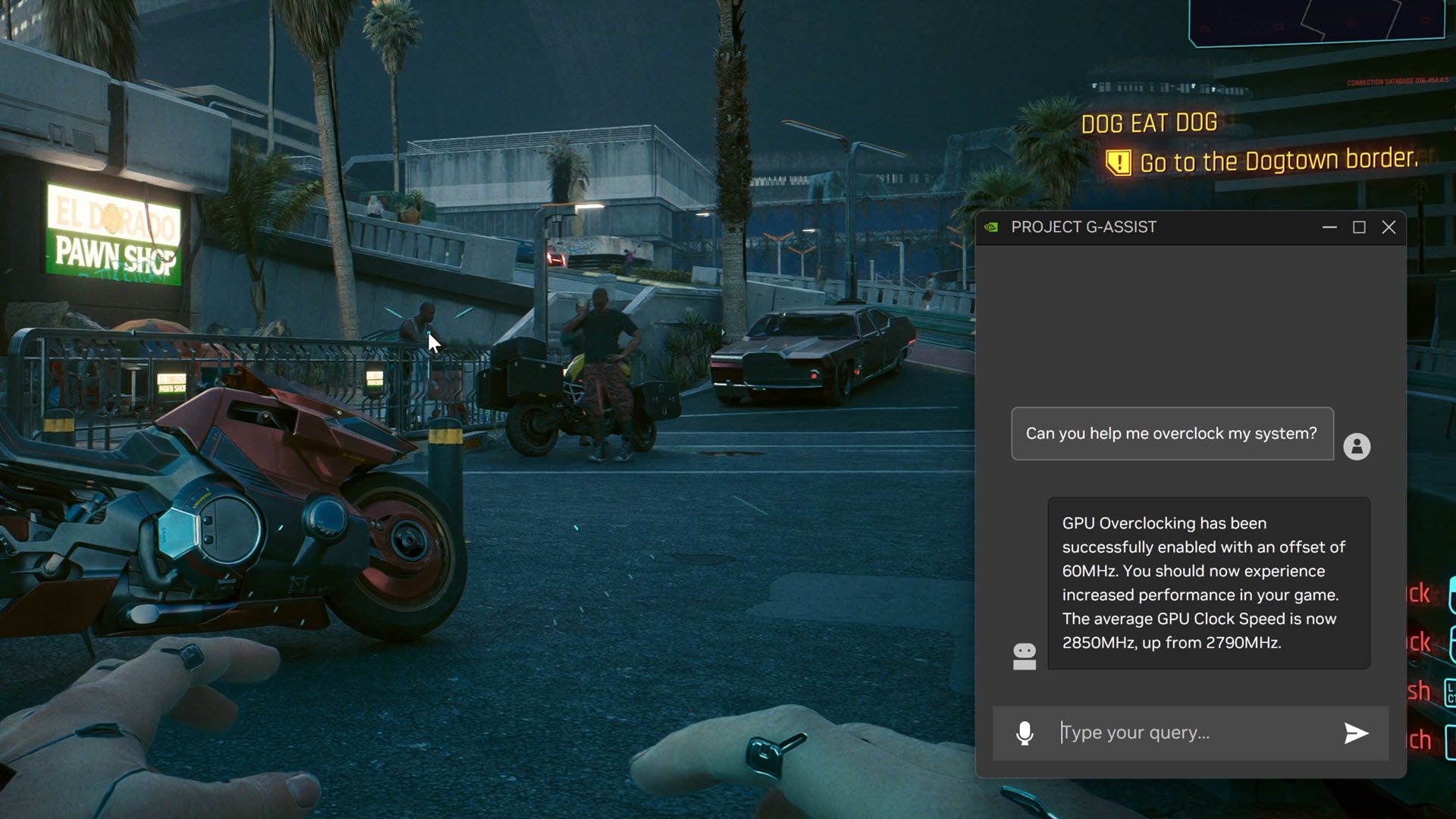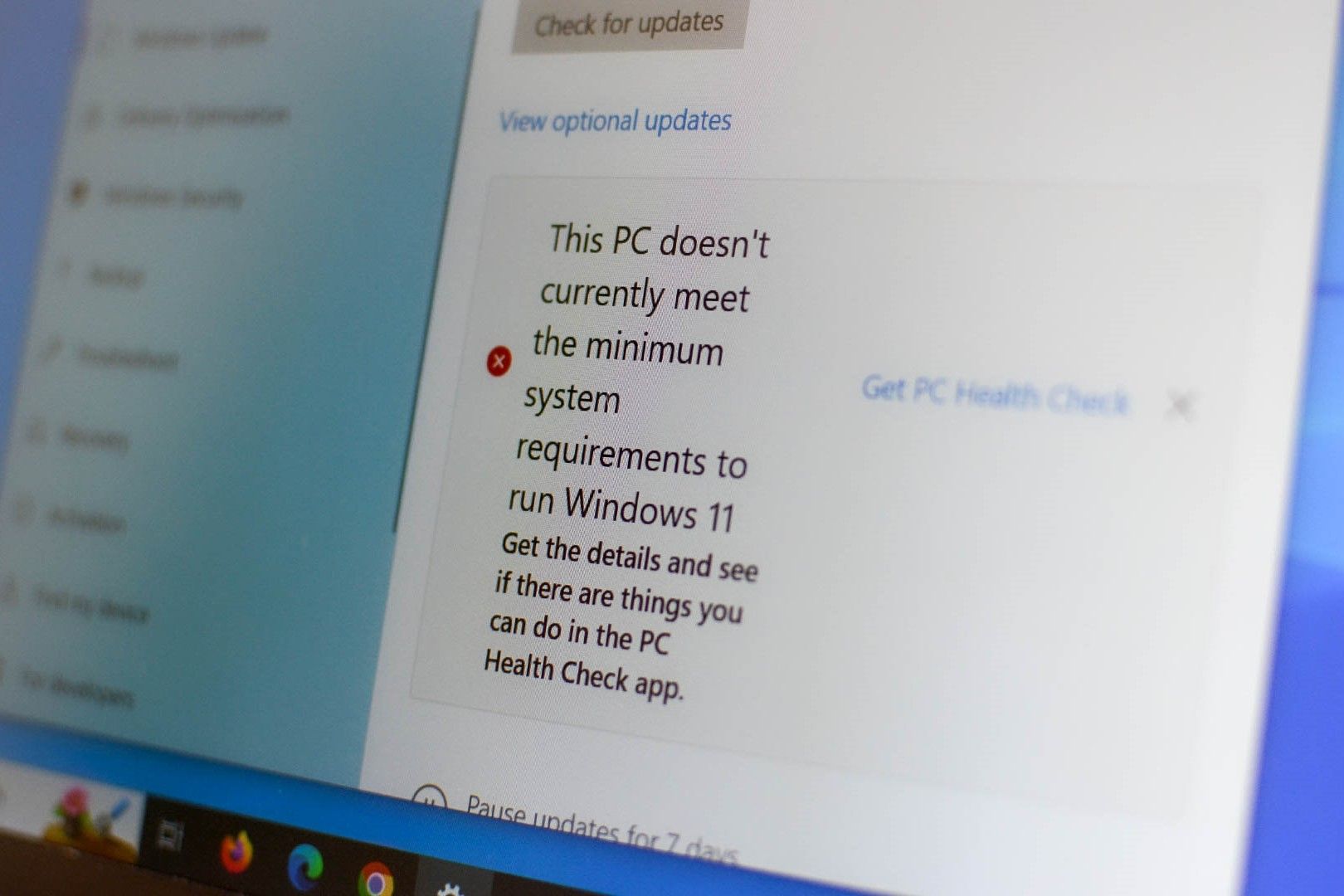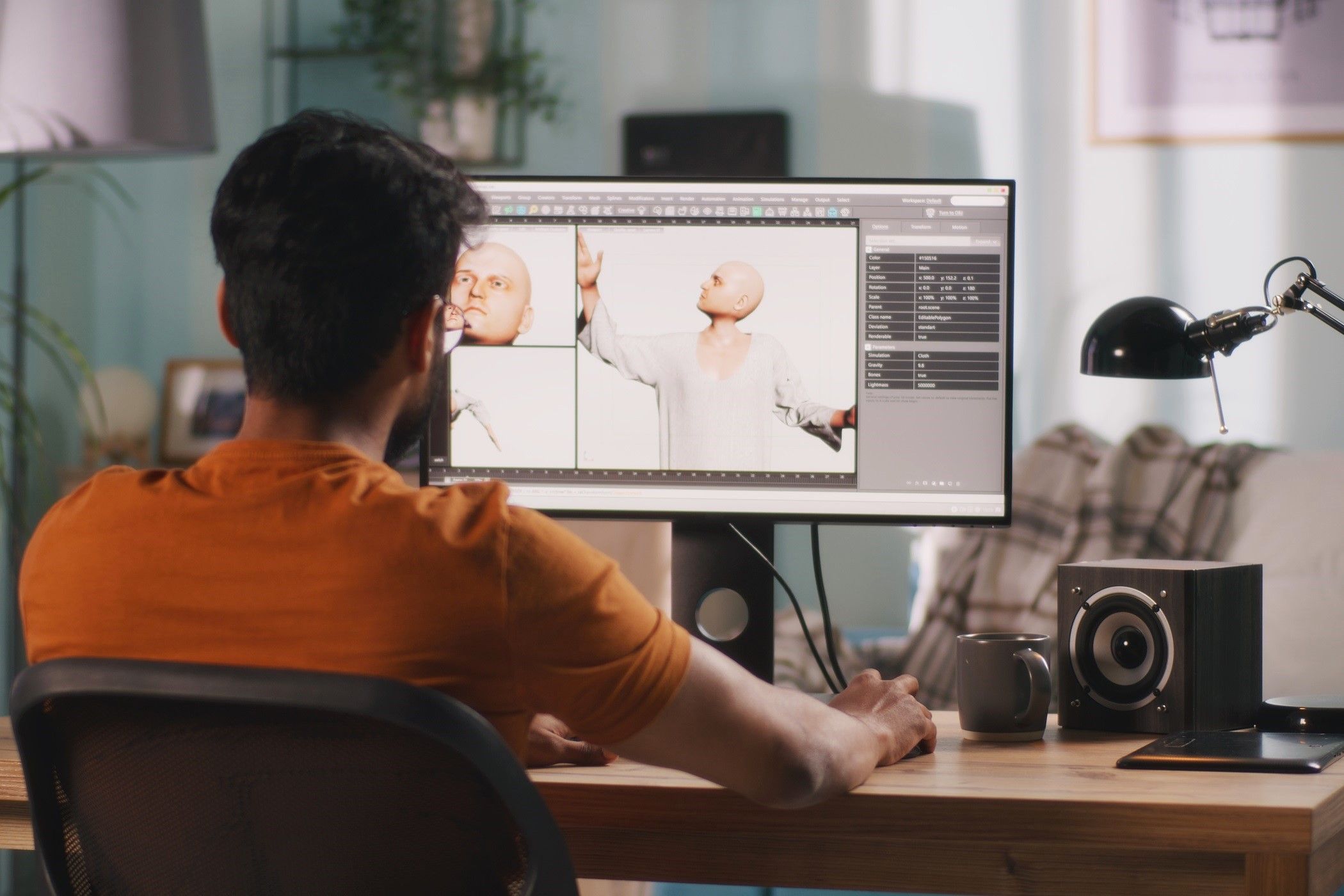Nvidia’s RTX AI PCs Are Here, and There Are 4 Reasons to Buy One
5 min read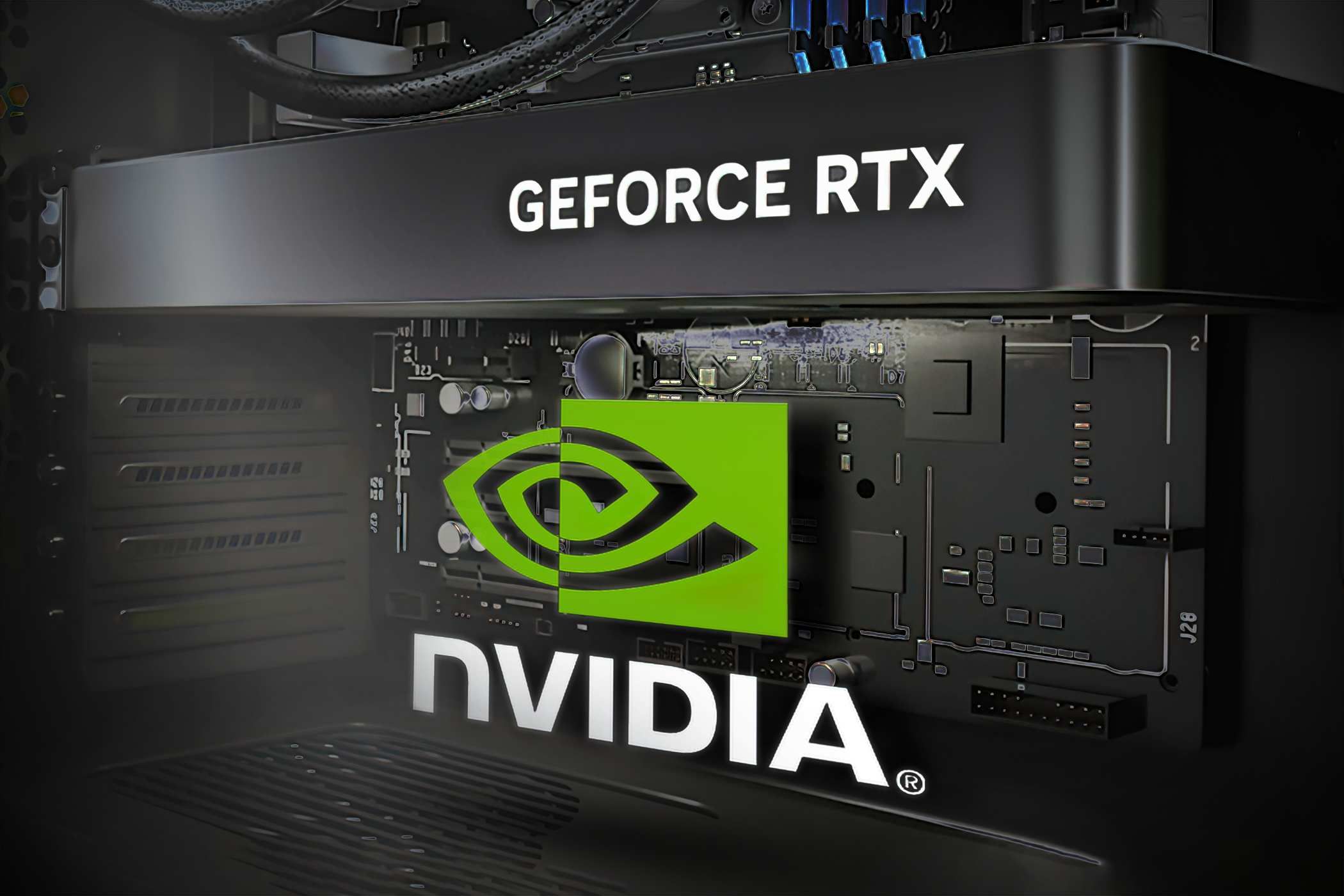
Key Takeaways
- Nvidia has launched RTX AI PCs with 600+ TOPS for faster performance in gaming and AI-powered tasks.
- Features include Project G-Assist AI assistant, Nvidia ACE for lifelike in-game characters, and RTX AI Toolkit for developers.
- RTX AI PCs offer GPU acceleration for generative AI apps like modding tools, Super Resolution, AI upscaling, and image cleanup.
Every major PC manufacturer is racing to add the AI tag to their PC. Not to be left behind, Nvidia is launching its RTX AI PCs, featuring a bunch of shiny new AI tools and features—and there are quite a few reasons you should consider buying one.
What Is an Nvidia RTX AI PC?
Nvidia’s new RTX AI PCs are currently a specific range of laptops that exceed Microsoft’s Copilot+ PC requirements. While other manufacturers like Intel and Qualcomm can offer AI compute powers of over 100 and 40 TOPS, respectively, Nvidia is banking on its RTX 40-Series GPUs instead, which bring over 600 TOPS of power.
RTX AI PCs are Windows Copilot+ PCs, but Nvidia’s AI features provide extra functionality. While Windows’ AI features are powered by the NPUs present in Qualcomm, Intel, and AMD CPUs, Nvidia will use its RTX GPUs to run its features.
Nvidia created this distinction to clearly differentiate between the two AI feature sets and to show just how powerful its hardware is going to be. The AI features that Microsoft is adding to Windows are classified as “Light AI,” while the RTX-enabled features are called “Heavy AI.”
That said, considering Microsoft and Nvidia also announced that the Windows Copilot runtime will soon support GPU acceleration for local small language models and other uses, Nvidia’s GPUs could help power just about all AI tasks on supported Windows machines.
Overall, Nvidia claims that RTX AI PCs will provide 30 times faster AI model training, eight times more FPS in modern games, and 13 times faster image generation using AI models. With up to 686 TOPS of AI compute power, RTX AI laptops will deliver seven times faster performance in Stable Diffusion 1.5 image generation compared to Apple’s M3 Max. You can also expect up to 10 times faster performance in LLMs (Large Language Models), although this was only tested on Llama 2 7B at batch size 8, to be specific.
Unlike Microsoft, Nvidia hasn’t put a definite hardware configuration on what it calls RTX AI PC either. It seems like any laptop equipped with an RTX 40-Series GPU and an AI NPU-enabled CPU will make the cut. It’s unclear whether the RTX AI PC tag and accompanying features will come to previous generation x86 processors from Intel and AMD.
Speaking of laptops, over 200 RTX AI branded laptops are on the way from just about every major manufacturer like Asus, Acer, Dell, Gigabyte, HP, Lenovo, LG, MSI, Razer, and Samsung. Asus has already announced its TUF A14 and A16 RTX AI laptops with Asus’ ROG Zephyrus G16, ProArt PX13, and PX16 also arriving shortly. Regardless, most RTX AI laptops will arrive around the 2024 holiday season.
What Features Will the RTX AI PCs Have?
Other than the in-game and AI performance boosts, RTX AI PCs will also bring a host of AI functionality to your PC, separate from the Windows Copilot AI features. With Nvidia reportedly killing its GTX lineup, here are four more reasons why you should buy an RTX AI PC.
1. Project G-Assist AI Assistant
Perhaps one of the most exciting new features of RTX AI PCs is the Project G-Assist AI Assistant. It’s an AI assistant that can answer your in-game queries for any game while being aware of what’s on your screen. Note that this is different from the Chat with RTX feature that you already might have access to.
Project G-Assist takes voice or text input from you, in addition to a snapshot of what’s on your screen, runs it through an LLM and fetches responses from online data sources such as game wikis. You can wake the assistant by using a hotkey or wake phrase.
For even more immersion, the assistant’s vision and language models can also be customized by developers for a specific game or app. The resulting custom models can then be run either in the cloud or locally on an RTX AI PC.
As you can imagine, this can be a massive help for just about every gamer in the planet. In an FPS game, you could instantly discover your current loadout’s meta, or if you’re playing an RTS game, G-Assist can suggest a particular strategy or build order.
The AI assistant can also optimize your games for you. Nvidia provided a demo of this by optimizing Cyberpunk on a PC with G-Assist using a single prompt. It can track and graph frame rates, power usage, PC latency, and other hardware statistics, ready to optimize performance as soon as you ask.
Additionally, G-Assist can also explain what individual settings do, including how they impact performance. The tool can even go as far as dynamically undervolting your GPU to get the best possible performance per watt.
2. Nvidia ACE
Broadly speaking, Nvidia ACE is a suite of technologies that makes digital humans, avatars, and in-game NPC characters more lifelike. The underlying AI models are trained on commercially safe and responsibly licenced data. Developers also have the option to further fine tune the models and add guardrails to ensure accurate and appropriate results.
Currently, ACE has two main use cases:
- Natural language interactions with in-game NPCs: Using Nvidia ACE, you can have full-blown conversations with in-game NPCs as long as the game’s developer. Imagine running into a character in your next AAA game, except you can actually talk to the character, instead of going through a list of possible replies.
- AI-based customer service agents: Another field where ACE can be deployed is customer support. We’ve already seen an example of this with Nvidia Tokkio, a digital assistant workflow built using ACE allowing AI customer services to come to the healthcare, financial services, and retail sectors.
3. Nvidia RTX AI Toolkit
If you like tinkering around with AI or are a small business or freelancer looking to add AI functionality to your own products, Nvidia’s RTX AI toolkit is just the thing for you.
The toolkit gives you access to a suite of tools and SDKs for Windows allowing developers customize, optimize, and deploy custom AI models on the cloud or locally, while being automatically optimized for performance on RTX PCs. Nvidia claims that developers can customize open-source models reducing their size by a factor of three while also quardrupling performance.
4. RTX Acceleration for Generative AI
Nvidia GPUs will also provide GPU acceleration for generative AI apps. There’s also an updated expected for its RTX Remix modding tools that combines game modding tools with generative AI features for better and faster upscaling of in-game assets.
Several other AI-powered features such as RTX Super Resolution, AI upscaling, and image cleanup are also expected soon on compatible RTX 40-Series laptops.

